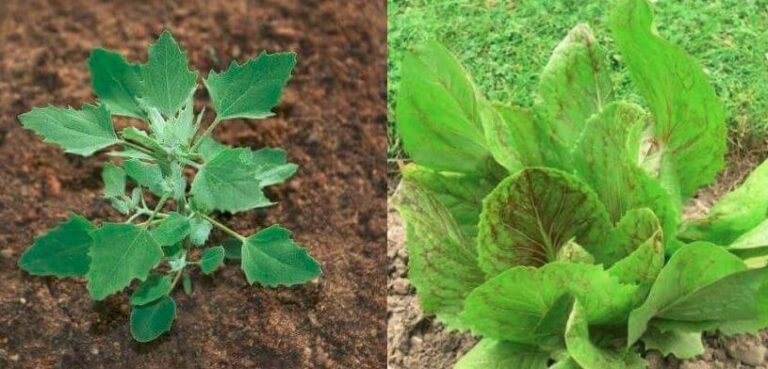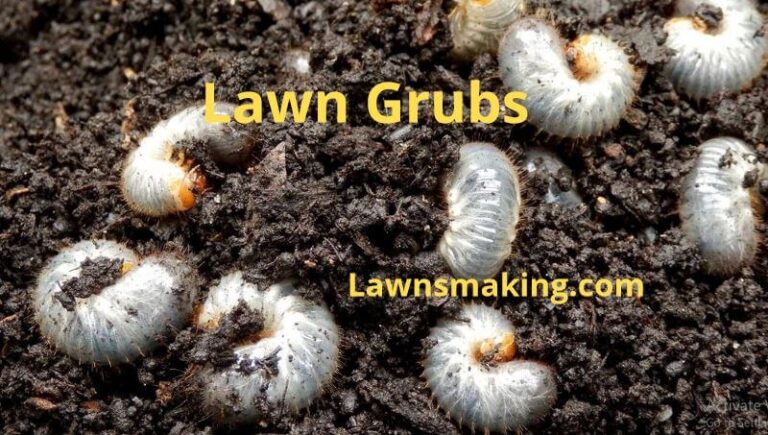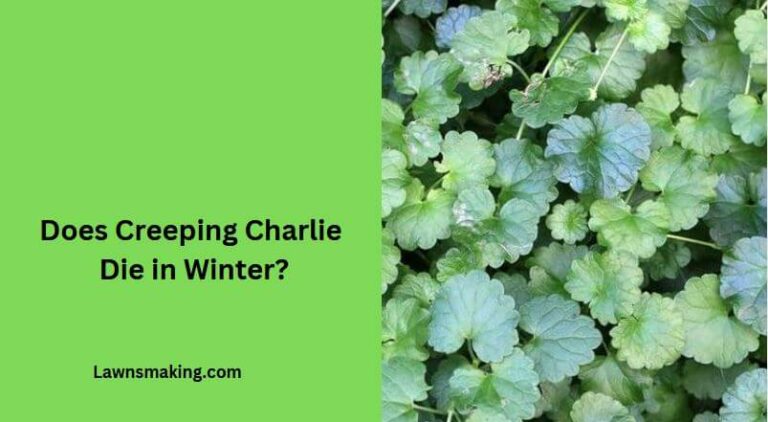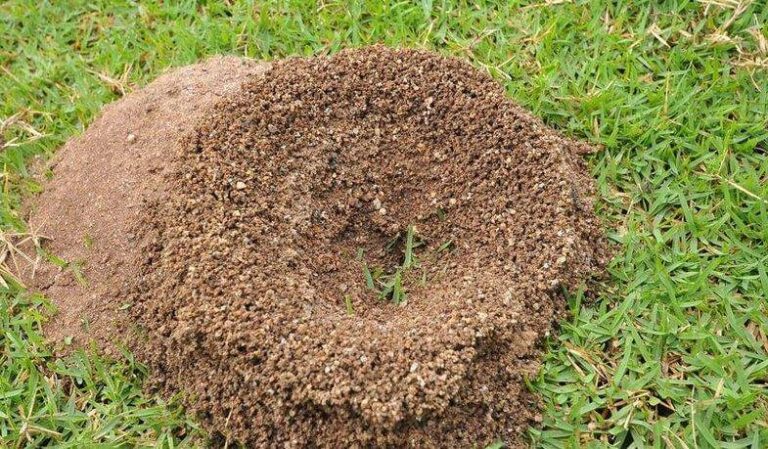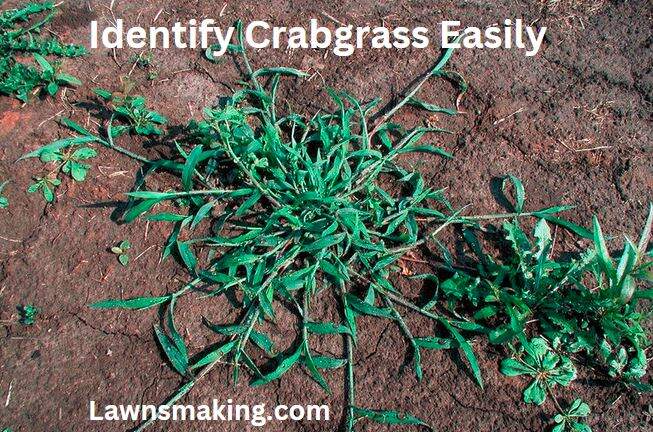
It is common for homeowners to question crabgrass identity as it resembles various lawn grasses and weeds. Crabgrass identification can be challenging because of the multiple portraits it can take as it modifies its growth in various conditions.
Standard identification features of crabgrass include wide and light to medium green leaf blades, reddish-purple stems, the presence of hairs and coarse texture. Crabgrass also grows faster than typical turf grasses, taking over the lawn by forming clusters of dense grass mats.
In this article, I’ll explore the features that allow easy crabgrass identification on your lawn. I’ll also attach pictures of crabgrass in various growth stages to help you spot it.
1. Crabgrass Has Broad Green Leaf Blades
Crabgrass has wide, linear-shaped leaf blades with pointed ends and a light silverish mid-vein.
Depending on the variety, the blades are usually a quarter inch wide or more and can grow to about 3-6 inches long.
The seedlings are typically light green and resemble a tiny corn plant. The leaf blades become medium green as the plant matures. However, crabgrass growing in areas with less sunlight will tend to retain the light green color.
The blades emanate outward from separate locations on a stem rather than a central point. This is a unique crabgrass feature, as most weeds and grasses send out their leaf blades from a central point.
Alt: Crabgrass leaf blades
Also, the ligules where the leaf sheath attaches to the stem have jagged top edges for large crabgrass. The smooth crabgrass lacks jagged ligules.
Crabgrass blades are plenty at the base and further apart along a stem.
Find Out: How to Kill Crabgrass With Baking Soda
2. Crabgrass Has Round, Reddish-purple Stems
Crabgrass stems begin as light green in seedlings, then darken with reddish-purple streaks as the weed grows, sprawls, and spreads out. The purple coloration becomes more apparent when the weed matures and winter sets in.
While turf grasses have flat stems, crabgrass has cylindrical stems that can grow up to 2 feet if left unmowed.
The stems grow outward from a central growing point in a star-shaped pattern.
Alt: Crabgrass stems in a star pattern
They will typically lie flat on a lawn mowed regularly with a lower cutting height. Conversely, they’ll grow more upright on an unmowed lawn or that with a higher mowing height.
As the weed attains maturity in summer, the stems increase to over a dozen in a plant.
Also Read: How Long Does It Take for Salt to Kill Weeds on a Lawn?
3. Crabgrass Has Hairs on Leaves and Stems
While typical turf grass will feel and look soft, crabgrass is coarse and covered with hair.
Alt: Hairs on crabgrass stem
This, however, will depend on the variety.
Large or hairy crabgrass has long, straight and sparse hairs all over the plant.
On the other hand, short or smooth crabgrass has tiny hairs at the auricles, where the leaf blades attach to the stems.
4. Crabgrass Forms Clusters of Thick Grass Mats
As mentioned, crabgrass stems sprawl out from a central spot and tend to lie prostrate, spreading horizontally across the surface.
The weed will continue producing new stems from the center while the first stems continue establishing stolons or runners, taking over spaces. The stolons branch out, making angular turns, taking the appearance of fingers or crab legs. Hence, the name.
With time, the bountiful growth will result in a thick weed mat and eventually a large cluster unless it’s mowed
The stolons of the large crabgrass variety will put out roots at the nodes, causing the growth of new branches. This amplifies the size of the grass, allowing it to smother the surrounding lawn area.
5. Seedheads With 3 to 5 Spikes
Both crabgrass varieties produce seed stalks throughout spring and summer.
The stalks can grow as high as 18 inches, with seed heads comprising 3-5 spikes.
Alt: Crabgrass seed spike in “V” formation
The spikes are usually 0.5-2.5 inches (1.3-6.4 cm) long. They radiate in a “V” pattern from the central stalk about ⅛ – ¼ inches (0.32-0.64 cm) apart. Each spike consists of two alternating spikelet rows.
Please note that Bermuda and Windmill grasses exhibit almost similar flowering stems. However, their stalks are shorter and thinner, and their spikes emanate from the same point on the stalk instead of apart.
Crabgrass seed heads can produce up to 150,000 seeds in a season. The seeds can be 1-2 mm long, oval, with pointed or rounded tips.
Crabgrass Identification in a Lawn
Crabgrass flourishes in lawns with bare spots and enough moisture and sunlight.
It will sprout ahead of its competitors with seedlings similar to turf grasses. But as it grows, the leaf blades will become broader than typical lawn grasses except for St. Augustine.
It may (or may not) blend in with the turf color depending on the grass species and how well the lawn is fertilized.
In a lawn with plenty of sunlight and moisture, crabgrass will grow, thicken, and form mats quickly, taking over the lawn. It may grow more upright in an area with competition, striving for sunlight and overshadowing its surroundings.
Crabgrass will still grow upward and outward on a lawn with less sun and moisture. However, it’ll appear thin, weak, and straggling.
You can also identify crabgrass by how fast it grows after mowing. It recovers faster than other grasses, resulting in a rough, unkempt lawn.
However, other grassy weeds may exhibit a similar trait.
Here’s a summary table to help you distinguish crabgrass from its common grass and weed look-alikes.
| Crabgrass Look-Alike | Distinguishing Factors |
| Bermuda grass | – Finer in texture- Generally spreads out evenly but can form dense mats – It doesn’t clump |
| Tall fescue | – Darker in color- Grows year-round – Grows more upright in a clump |
| Johnsongrass | – It’s much taller than crabgrass- Has wider blades with white mid-vein |
| Quackgrass | – Grows upright while crabgrass grows prostrate |
| Nimblewill | – It has short, thin, bluish-green leaves |
Conclusion
Crabgrass identification in a lawn is essential for early control. It is a notoriously invasive weed that just the thought of it can make one shiver.
Identifying this weed can be challenging as it can claim many faces due to its adaptability to different growing circumstances.
It can often get confused with grasses and weeds such as Bermuda, Tall Fescue, and Quackgrass.Use this guide to identify crabgrass on your lawn and start early treatment. Remember to mow, water, and fertilize your lawn properly to prevent further weed invasion.
